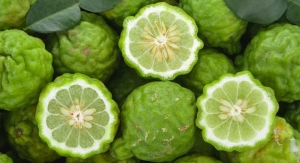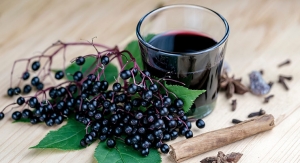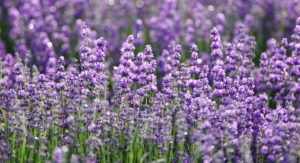Julie Dennis07.01.10
Many factors are converging to inspire herbal supplement use by an estimated one quarter of adult Americans, ushering in “the largest sales increase in the mainstream market in recent memory,” according to Mark Blumenthal, HerbalGram editor and American Botanical Council executive director.
Factors supporting this momentum include an aging population wanting to stay, or get healthy, an increased awareness of possible conventional drug side effects and limited, or no, medical insurance—and all are driving people to take proactive steps in personal, natural healthcare.
Green Light for Herbs & Botanicals
Sales of herbal dietary supplements in mainstream U.S. food, drug and mass markets increased more than 14% last year, generating $336 million in sales, according to a recent report published in HerbalGram, the quarterly journal of the American Botanical Council, Austin, TX. Not included in these figures are retailers including Wal-Mart, Sam’s Club, convenience stores and other large warehouse-buying clubs, which could add substantially to the bottom line.
“This news is really remarkable,” said Mr. Blumenthal, noting that, “in the most economically difficult market in over 70 years, when almost all consumer goods experienced a drop in sales, consumers voted strongly with scarcer dollars for herbal dietary supplements.”
In the natural channel, sales of herbal dietary supplements increased nearly 5% and generated more than $5 billion in 2009, according to SPINS data. By the end of the first quarter 2010, SPINS reported sales of single-ingredient products increased 10%, earning $81 million, and multi-herb formulas increased 2% for a total of $86 million.
But with botanicals showing up in everything from cosmeceuticals, dietary supplements, functional foods, regular foods, pharmaceuticals and more, this diversity leaves many industry analysts asking: what really is the bottom line? For example, plant-derived drug sales are forecasted to reach $33 billion by 2013, a projected compound annual growth rate (CAGR) of 651%, up from $19.5 billion in 2008, according to BCC Research, Wellesley, MA.
Not surprising is the fact that the majority of listings in early editions of the U.S. Pharmacopeia were plant-based drugs. Today, one third to one half of conventional drugs are originally derived from plants, according to a University of California, San Francisco (UCSF) Medical Center review published April 2008.
Popular plant-based drugs include Ipecac, which contains the roots and rhizome of the Brazilian plant ipecacuanha, ExLax, containing senna imported primarily from India, Sudan and Egypt, and Metamucil, which contains psyllium, generally from India. In fact, it’s estimated that the U.S. alone imports approximately 14 million kilos a year of psyllium for products that are typically found in the pharmaceutical channel in products like Metamucil.
With all the various channels and products botanicals are found in, data on which botanicals are the best sellers also varies. According to SPINS, aloe vera, flaxseed oil, wheat or barley grass, acaí and turmeric were the top-selling single herbal supplements of 2009 in the natural channel. Notably, valerian, known for its calming and relaxing affect, came in at number 13 and increased almost 25% in sales.
According to SymphonyIRI data, cranberry gained the most in 2009, increasing more than 23%, while soy held the number two spot but decreased more than 12%. Saw palmetto, garlic, echinacea, ginkgo, milk thistle, St. John’s Wort, ginseng and black cohosh also made it into the top 10 of SymphonyIRI’s 2009 data.
Further, according to a recent UCSF Medical Center review top sellers in the U.S. included echinacea, ginseng, ginkgo biloba, garlic, St. John’s Wort, peppermint, ginger, soy, chamomile and kava kava.
Stevia is another chart topper with future growth supported by various factors, including rampant diabetes, obesity and tooth decay, increased exposure to the potentially harmful side effects of artificial sweeteners, and the general need for people to get a handle on sugar intake. Also critical for stevia sales is the fact that in December 2008 FDA granted the plant’s extract, rebaudioside A, Generally Recognized As Safe (GRAS) status, allowing it to be used as a food and beverage additive. Another stevia coup emerged in April 2010, when the European Food Safety Authority (EFSA) followed suit and deemed steviol glycosides safe for use in foods and beverages, positioning it for another sales swell.
One big winner already in the stevia trade is Vancouver, Canada-based stevia leaf producer, manufacturer and distributor GLG Life Tech Corporation, which experienced an astounding 323% surge in growth last year, after it negotiated a $40.5 million deal with international food and ingredient company Cargill to supply stevia extract for its popular Truvia sweetener.
Also continuing to experience sales gains are some of the superfruits, in part, because consumers are increasingly discovering the benefits of antioxidants, a category which grew an estimated 16% in 2009. In fact sales of acaí increased more than 120% in 2008, and then in 2009 increased 133%, according to SPINS 2009 data.
Global Herb Trade
Is this trend of increased botanical usage a worldwide phenomenon? Yes, but it is here in the U.S. where the opportunity for growth is the strongest, according to many industry analysts.
First, people throughout the world have been using herbs for many reasons for a long, long time. In other words, herbal remedies and spices are nothing new to the majority of global citizens. But in the U.S. many people are just discovering the benefits of botanicals.
Indeed, “herbs are the most widely used medicines in the world, and they meet the health needs of people everywhere,” according to Chris Kilham, author, educator and founder of Medicine Hunter, Inc.
For instance, citizens of the United Arab Emirates have “faith and confidence in herbal medicines and are consequently high users of them despite generally having adopted Western conventional medical practices,” according to a survey conducted by the Ministry of Health, Abu Dhabi, in 2008.
Although herbal remedies continue to gain in popularity in many countries, “it’s generally viewed that the U.S. is a target market,” according to Josef Brinckmann, vice president of research and development at Traditional Medicinals, Sebastopol, CA.
Of course regulatory issues play a huge role in where manufacturers choose to focus new product launches. For example, “compared to the European Community, or Canada, or Australia, Japan, China or India, it’s easy to break into the U.S. market,” said Mr. Brinckmann.
In many ways the European Community is also a target market, but it’s “really, really difficult to break into, and that’s for ingredients and finished products,” Mr. Brinkmann said, adding that, “in most countries in the world it’s difficult to expand out of the herbs that are already officially recognized because you have to go through marketing authorization, unlike in the U.S. It wouldn’t be very easy at all to take a dietary supplement, finished product from the U.S. and register it in the People’s Republic of China or Japan. It’s not even that easy in the European Community. In fact, it’s quite complicated.”
To illustrate, he noted that not a single Ayurvedic or Traditional Chinese Medicine drug has been registered in the European community since the passage of the European Directive on Traditional Herbal Medicinal Products in 2004. “This may change in the future but right now the hurdle is just too darn high,” Mr. Brinckmann commented.
Under the directive, all herbal medicinal products are required to obtain an authorization to market. Products marketed before this legislation was implemented can continue to be sold until April 2011, after which all herbal medicinal products must have pre-market authorization.
“I think they’ll make corrections once they see what isn’t working under the new directive, and there may even be legal challenges with the implementation date coming up in 2011. If the law is enforced after April 2011, a whole range of Asian herbal medicinal products may disappear from the European market,” said Mr. Brinckmann.
Already, in late March of this year, at an event sponsored by the India government and convened by the European Ayurvedic Association, the Alliance for Natural Health International announced their intention of beginning legal proceedings against the European directive. This may be just the beginning of challenges to the directive as the deadline approaches.
Digestion, Flu and Stress Oh My!
With sales growing in the botanical market, the top-sellers lists offer a clear indication why consumers are turning to herbs such as aloe vera, flax, echinaca, saw palmetto, garlic, kava kava and valerian.
“There are the age related conditions and then there are the non-age related conditions. The non-age-related conditions are energy, sleep, mental health issues like mood, depression and anxiety, stress, fitness and weight, allergies and digestive issues. The age-related conditions are menopause, bone health, arthritis, eye health, cognitive health, diabetes prevention, cancer prevention and heart health,” according to Dr. Susan Beck PhD, L.Ac, CNS and president of Nutritional Innovations.
The media will also continue to focus people’s attention and influence where they are willing to spend their money. Ginkgo, for example, took a hit when a study published in the Journal of the American Medical Association (JAMA), December 2009, claimed that the herb does not slow the rate of cognitive decline in older adults. Time magazine, among the media pack, promptly declared: “Study: Ginkgo Flunks Test as a Brain Booster.”
With a swift response, the Council for Responsible Nutrition, the American Herbal Products Association and the American Botanical Council all publicly aired concerns and comments about the study’s various limitations.
But this wasn’t the first time ginkgo was slammed by the media. In 2007, ginkgo sales increased 4% and reached approximately $107 million; then in 2008 JAMA published data from this same ginkgo study claiming that the herbal supplement did not prevent the onset of dementia or Alzheimer’s disease, causing sales to decrease 8%.
As consumers gain access to information they are becoming more skeptical and aware of the potential flip-flop nature of the media, and the challenges scientific studies may pose. They are therefore increasingly relying on more of a consensus of information, rather than just one article or questionable study.
Media coverage may not only slow growth periodically, it can also champion sales spikes. “All the media blitz on the flu drove consumers to numerous immune tonifiers and immune stimulants these past two seasons,” said Roy Upton, herbalist and general manager, Planetary Herbals, Scotts Valley, CA.
Much of the attention, he said, is increasingly geared toward prevention rather than treating acute symptoms. “People are realizing they need to bolster immune defenses rather than wait until they get sick. Better late than never,” added Mr. Upton.
In fact, in May 2009 sales for echinacea and elderberry spiked 20% and 31% respectively, and then in March 2010 this trend continued with two of the top three selling single herb products targeting immune function, according to SPINS data. Overall in 2009, elderberry increased more than 49%, according to SPINS.
Also in the news having recently received GRAS status is baobab, primarily from Africa and Australia. It has been used for centuries but is now becoming known worldwide for its nutrient and antioxidant profile.
Continuing to gain ground are maca, Pycnogenol, blueberries and cocoa. Maca from Peru is slowly earning scientific support for its use, in part, as a sexual tonic. Benefitting from several studies, Pycnogenol and blueberries continue to solidify their place in the antioxidant category. And cocoa will continue enticing consumers as studies emerge regarding its positive effect on heart health, blood pressure, diabetes, mood and brain health.
Scientific Swell
According to many industry experts, gone are the lonely days of pining for random scientific validation for the safe and effective use of botanicals. “It just seems like scientific research on everything is increasing,” said Traditional Medicinals’ Mr. Brinckmann.
Studies continue to surface on the health benefits of acaí, coffee, blueberry, pomegranate, green tea, pine bark and echinacea—all exceptional performers in the botanical marketplace.
Research is also being conducted on the benefits of pomegranate and goji, and according to Dr. Beck, “it’s nice to finally see a couple of studies that show, yes, some of the superfruits do increase antioxidant totals.”
Expect sales growth of immune-enhancing herbs such as andrographis, isatis, lomatium and astragalus, and incremental increases with chia and hemp seeds, rich sources of fatty acids, cinnamon for healthy blood sugar support, pomegranate for its ellagitannins and turmeric, according to Mr. Upton.
While science is important, traditional usage will also continue to play a role. “I think people are going to keep looking for intriguing things that are good for them, and people are interested in traditional stories and they’re interested in foods from around the world especially if they’re good for you,” said Dr. Beck.
As the herb category continues to evolve, so will delivery systems. “I think people will likely be getting their herbs in pills and tablets, but beverages are becoming more and more popular, especially tea-based drinks,” said Dr. Beck.
Herbal tea sales, for example, increased well over 4% and earned $68 million in sales, according to SPINS March 2010, 52-week report. Top sellers in this category focused on digestion, cold and flu, energy, sleep, cleansing, support for breastfeeding and ease of breathing.
The Wild West: A New Regulatory Frontier
“It’s pretty obvious there’s a new sheriff in town. It doesn’t seem as though a week goes by without a number of significant enforcement actions by both FTC and FDA, so it seems like all the outliers are going to be cleared out. I think this is going to continue and depending on how you view things, it’s either a good thing or a bad thing. A lot of the outliers making outlandish claims are being roped in so that’s probably good,” said Mr. Brinckmann of Traditional Medicinals.
For example, in March 2010, at the request of the FDA, U.S. Marshals seized consumer products from Haywood, WI-based Beehive Botanicals, alleging that products were misbranded and unapproved new drugs in violation of the Federal Food, Drug and Cosmetics Act. Apparently label, promotional materials and web-based claims stated that some of the products could be used to diagnose, cure and prevent diseases, aid in the prevention or treatment of cancer, liver or kidney disease. These claims persisted, allegedly despite previous requests and warnings from FDA.
Manufacturers take note, said Mr. Brinkmann, some of the products being seized or receiving warning letters are “similar to products a lot of companies in our industry have.”
A recent report prepared by the Government Accountability Office (GAO) found that at least nine products out of 14 apparently made illegal health claims, including a ginkgo product labeled as a treatment for Alzheimer’s disease and another product containing ginseng claiming it could be used as a treatment to prevent diabetes and cancer.
Equally troubling for the industry are the adulteration and supply chain issues.
And as always, consumers and manufacturers must remain alert for future legislation that may threaten their healthcare choices. Most recently it was the now defunct Dietary Supplement Safety Act of 2010. The new proposed bill to keep an eye on is the Food Safety Modernization Act.
In response to a chain of food-borne illness outbreaks involving spinach, sprouts, jalapeno’s, peanuts and more, late last year a preliminary Senate committee approved the proposed Food Safety Act, which would overhaul of FDA’s food safety system allowing the agency to order a recall, instead of simply issuing requests for recalls. The proposed $3.7 billion bill will go to the senate floor this year. It remains to be seen how the legislation would be paid for and how, or if, it will affect herbal dietary supplements.
In a nutshell, “good: continued growth from increasing consumer demand; bad: increased threat of losing access to numerous herbs through increased government initiatives, such as the now dead McCain Bill, increased FDA and FTC activity, and attacks on DSHEA by Democratic members of Congress,” said Planetary Herbals’ Mr. Upton.
Fundamentally we all want to live a good life, healthy and long. For so many, and for so long, herbs have played a huge role throughout the world, providing vital support to help reach this goal. So while detractors may come and go, and sales may ebb and flow, long before you were here and long, long after, herbs will likely continue playing a major role in the world’s natural healthcare system.
Factors supporting this momentum include an aging population wanting to stay, or get healthy, an increased awareness of possible conventional drug side effects and limited, or no, medical insurance—and all are driving people to take proactive steps in personal, natural healthcare.
Green Light for Herbs & Botanicals
Sales of herbal dietary supplements in mainstream U.S. food, drug and mass markets increased more than 14% last year, generating $336 million in sales, according to a recent report published in HerbalGram, the quarterly journal of the American Botanical Council, Austin, TX. Not included in these figures are retailers including Wal-Mart, Sam’s Club, convenience stores and other large warehouse-buying clubs, which could add substantially to the bottom line.
“This news is really remarkable,” said Mr. Blumenthal, noting that, “in the most economically difficult market in over 70 years, when almost all consumer goods experienced a drop in sales, consumers voted strongly with scarcer dollars for herbal dietary supplements.”
In the natural channel, sales of herbal dietary supplements increased nearly 5% and generated more than $5 billion in 2009, according to SPINS data. By the end of the first quarter 2010, SPINS reported sales of single-ingredient products increased 10%, earning $81 million, and multi-herb formulas increased 2% for a total of $86 million.
But with botanicals showing up in everything from cosmeceuticals, dietary supplements, functional foods, regular foods, pharmaceuticals and more, this diversity leaves many industry analysts asking: what really is the bottom line? For example, plant-derived drug sales are forecasted to reach $33 billion by 2013, a projected compound annual growth rate (CAGR) of 651%, up from $19.5 billion in 2008, according to BCC Research, Wellesley, MA.
Not surprising is the fact that the majority of listings in early editions of the U.S. Pharmacopeia were plant-based drugs. Today, one third to one half of conventional drugs are originally derived from plants, according to a University of California, San Francisco (UCSF) Medical Center review published April 2008.
Popular plant-based drugs include Ipecac, which contains the roots and rhizome of the Brazilian plant ipecacuanha, ExLax, containing senna imported primarily from India, Sudan and Egypt, and Metamucil, which contains psyllium, generally from India. In fact, it’s estimated that the U.S. alone imports approximately 14 million kilos a year of psyllium for products that are typically found in the pharmaceutical channel in products like Metamucil.
With all the various channels and products botanicals are found in, data on which botanicals are the best sellers also varies. According to SPINS, aloe vera, flaxseed oil, wheat or barley grass, acaí and turmeric were the top-selling single herbal supplements of 2009 in the natural channel. Notably, valerian, known for its calming and relaxing affect, came in at number 13 and increased almost 25% in sales.
According to SymphonyIRI data, cranberry gained the most in 2009, increasing more than 23%, while soy held the number two spot but decreased more than 12%. Saw palmetto, garlic, echinacea, ginkgo, milk thistle, St. John’s Wort, ginseng and black cohosh also made it into the top 10 of SymphonyIRI’s 2009 data.
Further, according to a recent UCSF Medical Center review top sellers in the U.S. included echinacea, ginseng, ginkgo biloba, garlic, St. John’s Wort, peppermint, ginger, soy, chamomile and kava kava.
Stevia is another chart topper with future growth supported by various factors, including rampant diabetes, obesity and tooth decay, increased exposure to the potentially harmful side effects of artificial sweeteners, and the general need for people to get a handle on sugar intake. Also critical for stevia sales is the fact that in December 2008 FDA granted the plant’s extract, rebaudioside A, Generally Recognized As Safe (GRAS) status, allowing it to be used as a food and beverage additive. Another stevia coup emerged in April 2010, when the European Food Safety Authority (EFSA) followed suit and deemed steviol glycosides safe for use in foods and beverages, positioning it for another sales swell.
One big winner already in the stevia trade is Vancouver, Canada-based stevia leaf producer, manufacturer and distributor GLG Life Tech Corporation, which experienced an astounding 323% surge in growth last year, after it negotiated a $40.5 million deal with international food and ingredient company Cargill to supply stevia extract for its popular Truvia sweetener.
Also continuing to experience sales gains are some of the superfruits, in part, because consumers are increasingly discovering the benefits of antioxidants, a category which grew an estimated 16% in 2009. In fact sales of acaí increased more than 120% in 2008, and then in 2009 increased 133%, according to SPINS 2009 data.
Global Herb Trade
Is this trend of increased botanical usage a worldwide phenomenon? Yes, but it is here in the U.S. where the opportunity for growth is the strongest, according to many industry analysts.
First, people throughout the world have been using herbs for many reasons for a long, long time. In other words, herbal remedies and spices are nothing new to the majority of global citizens. But in the U.S. many people are just discovering the benefits of botanicals.
Indeed, “herbs are the most widely used medicines in the world, and they meet the health needs of people everywhere,” according to Chris Kilham, author, educator and founder of Medicine Hunter, Inc.
For instance, citizens of the United Arab Emirates have “faith and confidence in herbal medicines and are consequently high users of them despite generally having adopted Western conventional medical practices,” according to a survey conducted by the Ministry of Health, Abu Dhabi, in 2008.
Although herbal remedies continue to gain in popularity in many countries, “it’s generally viewed that the U.S. is a target market,” according to Josef Brinckmann, vice president of research and development at Traditional Medicinals, Sebastopol, CA.
Of course regulatory issues play a huge role in where manufacturers choose to focus new product launches. For example, “compared to the European Community, or Canada, or Australia, Japan, China or India, it’s easy to break into the U.S. market,” said Mr. Brinckmann.
In many ways the European Community is also a target market, but it’s “really, really difficult to break into, and that’s for ingredients and finished products,” Mr. Brinkmann said, adding that, “in most countries in the world it’s difficult to expand out of the herbs that are already officially recognized because you have to go through marketing authorization, unlike in the U.S. It wouldn’t be very easy at all to take a dietary supplement, finished product from the U.S. and register it in the People’s Republic of China or Japan. It’s not even that easy in the European Community. In fact, it’s quite complicated.”
To illustrate, he noted that not a single Ayurvedic or Traditional Chinese Medicine drug has been registered in the European community since the passage of the European Directive on Traditional Herbal Medicinal Products in 2004. “This may change in the future but right now the hurdle is just too darn high,” Mr. Brinckmann commented.
Under the directive, all herbal medicinal products are required to obtain an authorization to market. Products marketed before this legislation was implemented can continue to be sold until April 2011, after which all herbal medicinal products must have pre-market authorization.
“I think they’ll make corrections once they see what isn’t working under the new directive, and there may even be legal challenges with the implementation date coming up in 2011. If the law is enforced after April 2011, a whole range of Asian herbal medicinal products may disappear from the European market,” said Mr. Brinckmann.
Already, in late March of this year, at an event sponsored by the India government and convened by the European Ayurvedic Association, the Alliance for Natural Health International announced their intention of beginning legal proceedings against the European directive. This may be just the beginning of challenges to the directive as the deadline approaches.
Digestion, Flu and Stress Oh My!
With sales growing in the botanical market, the top-sellers lists offer a clear indication why consumers are turning to herbs such as aloe vera, flax, echinaca, saw palmetto, garlic, kava kava and valerian.
“There are the age related conditions and then there are the non-age related conditions. The non-age-related conditions are energy, sleep, mental health issues like mood, depression and anxiety, stress, fitness and weight, allergies and digestive issues. The age-related conditions are menopause, bone health, arthritis, eye health, cognitive health, diabetes prevention, cancer prevention and heart health,” according to Dr. Susan Beck PhD, L.Ac, CNS and president of Nutritional Innovations.
The media will also continue to focus people’s attention and influence where they are willing to spend their money. Ginkgo, for example, took a hit when a study published in the Journal of the American Medical Association (JAMA), December 2009, claimed that the herb does not slow the rate of cognitive decline in older adults. Time magazine, among the media pack, promptly declared: “Study: Ginkgo Flunks Test as a Brain Booster.”
With a swift response, the Council for Responsible Nutrition, the American Herbal Products Association and the American Botanical Council all publicly aired concerns and comments about the study’s various limitations.
But this wasn’t the first time ginkgo was slammed by the media. In 2007, ginkgo sales increased 4% and reached approximately $107 million; then in 2008 JAMA published data from this same ginkgo study claiming that the herbal supplement did not prevent the onset of dementia or Alzheimer’s disease, causing sales to decrease 8%.
As consumers gain access to information they are becoming more skeptical and aware of the potential flip-flop nature of the media, and the challenges scientific studies may pose. They are therefore increasingly relying on more of a consensus of information, rather than just one article or questionable study.
Media coverage may not only slow growth periodically, it can also champion sales spikes. “All the media blitz on the flu drove consumers to numerous immune tonifiers and immune stimulants these past two seasons,” said Roy Upton, herbalist and general manager, Planetary Herbals, Scotts Valley, CA.
Much of the attention, he said, is increasingly geared toward prevention rather than treating acute symptoms. “People are realizing they need to bolster immune defenses rather than wait until they get sick. Better late than never,” added Mr. Upton.
In fact, in May 2009 sales for echinacea and elderberry spiked 20% and 31% respectively, and then in March 2010 this trend continued with two of the top three selling single herb products targeting immune function, according to SPINS data. Overall in 2009, elderberry increased more than 49%, according to SPINS.
Also in the news having recently received GRAS status is baobab, primarily from Africa and Australia. It has been used for centuries but is now becoming known worldwide for its nutrient and antioxidant profile.
Continuing to gain ground are maca, Pycnogenol, blueberries and cocoa. Maca from Peru is slowly earning scientific support for its use, in part, as a sexual tonic. Benefitting from several studies, Pycnogenol and blueberries continue to solidify their place in the antioxidant category. And cocoa will continue enticing consumers as studies emerge regarding its positive effect on heart health, blood pressure, diabetes, mood and brain health.
Scientific Swell
According to many industry experts, gone are the lonely days of pining for random scientific validation for the safe and effective use of botanicals. “It just seems like scientific research on everything is increasing,” said Traditional Medicinals’ Mr. Brinckmann.
Studies continue to surface on the health benefits of acaí, coffee, blueberry, pomegranate, green tea, pine bark and echinacea—all exceptional performers in the botanical marketplace.
Research is also being conducted on the benefits of pomegranate and goji, and according to Dr. Beck, “it’s nice to finally see a couple of studies that show, yes, some of the superfruits do increase antioxidant totals.”
Expect sales growth of immune-enhancing herbs such as andrographis, isatis, lomatium and astragalus, and incremental increases with chia and hemp seeds, rich sources of fatty acids, cinnamon for healthy blood sugar support, pomegranate for its ellagitannins and turmeric, according to Mr. Upton.
While science is important, traditional usage will also continue to play a role. “I think people are going to keep looking for intriguing things that are good for them, and people are interested in traditional stories and they’re interested in foods from around the world especially if they’re good for you,” said Dr. Beck.
As the herb category continues to evolve, so will delivery systems. “I think people will likely be getting their herbs in pills and tablets, but beverages are becoming more and more popular, especially tea-based drinks,” said Dr. Beck.
Herbal tea sales, for example, increased well over 4% and earned $68 million in sales, according to SPINS March 2010, 52-week report. Top sellers in this category focused on digestion, cold and flu, energy, sleep, cleansing, support for breastfeeding and ease of breathing.
The Wild West: A New Regulatory Frontier
“It’s pretty obvious there’s a new sheriff in town. It doesn’t seem as though a week goes by without a number of significant enforcement actions by both FTC and FDA, so it seems like all the outliers are going to be cleared out. I think this is going to continue and depending on how you view things, it’s either a good thing or a bad thing. A lot of the outliers making outlandish claims are being roped in so that’s probably good,” said Mr. Brinckmann of Traditional Medicinals.
For example, in March 2010, at the request of the FDA, U.S. Marshals seized consumer products from Haywood, WI-based Beehive Botanicals, alleging that products were misbranded and unapproved new drugs in violation of the Federal Food, Drug and Cosmetics Act. Apparently label, promotional materials and web-based claims stated that some of the products could be used to diagnose, cure and prevent diseases, aid in the prevention or treatment of cancer, liver or kidney disease. These claims persisted, allegedly despite previous requests and warnings from FDA.
Manufacturers take note, said Mr. Brinkmann, some of the products being seized or receiving warning letters are “similar to products a lot of companies in our industry have.”
A recent report prepared by the Government Accountability Office (GAO) found that at least nine products out of 14 apparently made illegal health claims, including a ginkgo product labeled as a treatment for Alzheimer’s disease and another product containing ginseng claiming it could be used as a treatment to prevent diabetes and cancer.
Equally troubling for the industry are the adulteration and supply chain issues.
And as always, consumers and manufacturers must remain alert for future legislation that may threaten their healthcare choices. Most recently it was the now defunct Dietary Supplement Safety Act of 2010. The new proposed bill to keep an eye on is the Food Safety Modernization Act.
In response to a chain of food-borne illness outbreaks involving spinach, sprouts, jalapeno’s, peanuts and more, late last year a preliminary Senate committee approved the proposed Food Safety Act, which would overhaul of FDA’s food safety system allowing the agency to order a recall, instead of simply issuing requests for recalls. The proposed $3.7 billion bill will go to the senate floor this year. It remains to be seen how the legislation would be paid for and how, or if, it will affect herbal dietary supplements.
In a nutshell, “good: continued growth from increasing consumer demand; bad: increased threat of losing access to numerous herbs through increased government initiatives, such as the now dead McCain Bill, increased FDA and FTC activity, and attacks on DSHEA by Democratic members of Congress,” said Planetary Herbals’ Mr. Upton.
Fundamentally we all want to live a good life, healthy and long. For so many, and for so long, herbs have played a huge role throughout the world, providing vital support to help reach this goal. So while detractors may come and go, and sales may ebb and flow, long before you were here and long, long after, herbs will likely continue playing a major role in the world’s natural healthcare system.



























